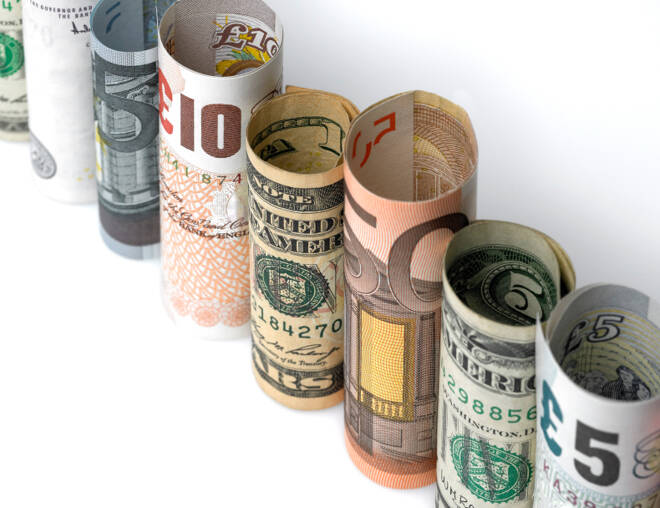Advertisement
Advertisement
US Dollar Index Spikes Higher as Major Currencies Give Back Weekly Gains
By:
The Bank of Canada signaled the prior week it could start hiking rates from their record lows in late 2022 and cut the pace of its bond purchases.
The U.S. Dollar closed higher last week with all of its gains coming on Friday. The headlines said the rally was fueled by month-end profit-taking, but Treasury yields edged higher for the week and most of the U.S. economic reports beat the forecasts so there may be more to the move than end-of-the-month position-squaring.
The Fed was dovish as expected but this wasn’t news since Fed Chairman Powell and his policymaking colleagues have been telegraphing this for months. Nonetheless, the headliner writers blamed central bank policy for the weakness ahead of Friday.
Last week, the June U.S. Dollar Index settled at 91.270, up 0.431 or +0.47%.
Dollar Index Component Breakdown
Breaking down the week into the Dollar Index’s main components the Euro lost 0.63%, the British Pound fell 0.51% and the Japanese Yen closed 1.35% lower. The Canadian Dollar rose 1.46% and the Swiss Franc was up 0.07%.
The Australian and New Zealand Dollars were down 0.49% and 0.47% for the week, respectively. However, the commodity-linked currencies aren’t a component of the dollar index.
The Euro fell sharply on Friday, erasing all of its weekly gains just one day after reaching its highest level since February 26.
Reuters reported on Friday that the Euro Zone economy dipped into a second technical recession after a smaller than expected contraction in the first quarter, but is now firmly set for a recovery as pandemic curbs are lifted amid accelerating vaccination campaigns, economists said.
The British Pound also wiped out its weekly gains on Friday as investors dumped the Sterling ahead of next week’s Bank of England policy meeting. Few analysts expect major changes to the Bank of England’s policy settings next Thursday, although some see the central bank slowing its bond-buying.
The Japanese Yen was weak against the U.S. Dollar all week as rising Treasury yields helped widen the spread over Japanese Government bond yields, making the U.S. Dollar a more attractive asset.
The Canadian Dollar rose against the greenback in a move that was sparked on Wednesday as investors cheered domestic retail sales data and the Federal Reserve stuck to its dovish stance, trailing the Bank of Canada on moves to reduce emergency support for the economy.
The Fed held interest rates and its monthly bond-buying program steady, nodding to the U.S. economy’s growing strength but giving no sign it was ready to reduce its support for the recovery.
In contrast, the Bank of Canada signaled the prior week it could start hiking rates from their record lows in late 2022 and cut the pace of its bond purchases.
Essentially, Canadian Government bond yields rose faster than U.S. Government bond yields, making the Canadian Dollar a more attractive asset.
For a look at all of today’s economic events, check out our economic calendar.
About the Author
James Hyerczykauthor
James Hyerczyk is a U.S. based seasoned technical analyst and educator with over 40 years of experience in market analysis and trading, specializing in chart patterns and price movement. He is the author of two books on technical analysis and has a background in both futures and stock markets.
Advertisement
